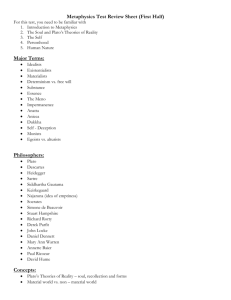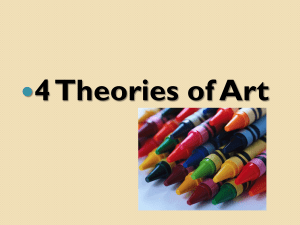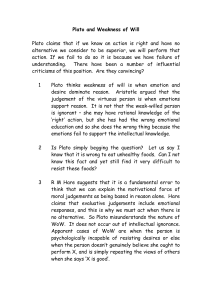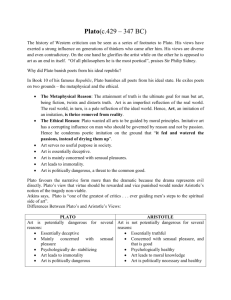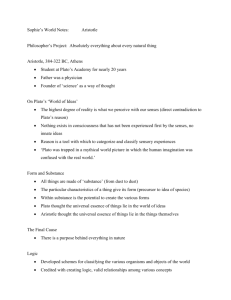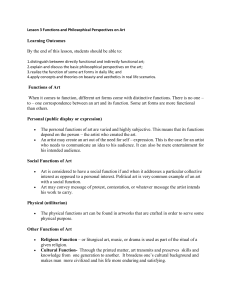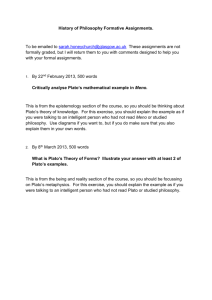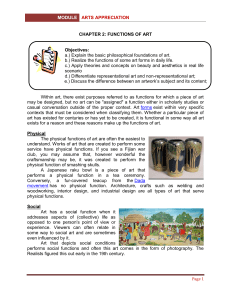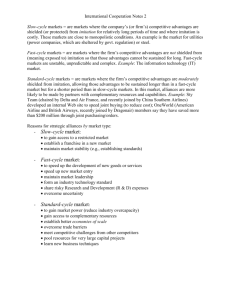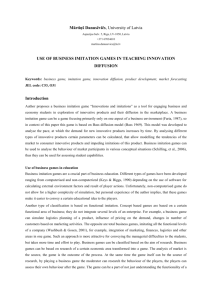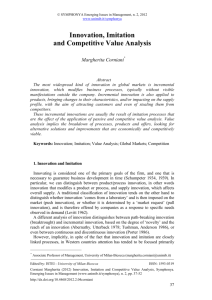Aesthetic: Ideas Plato/Aristotle/Augustine/Conaille/Shalley
advertisement
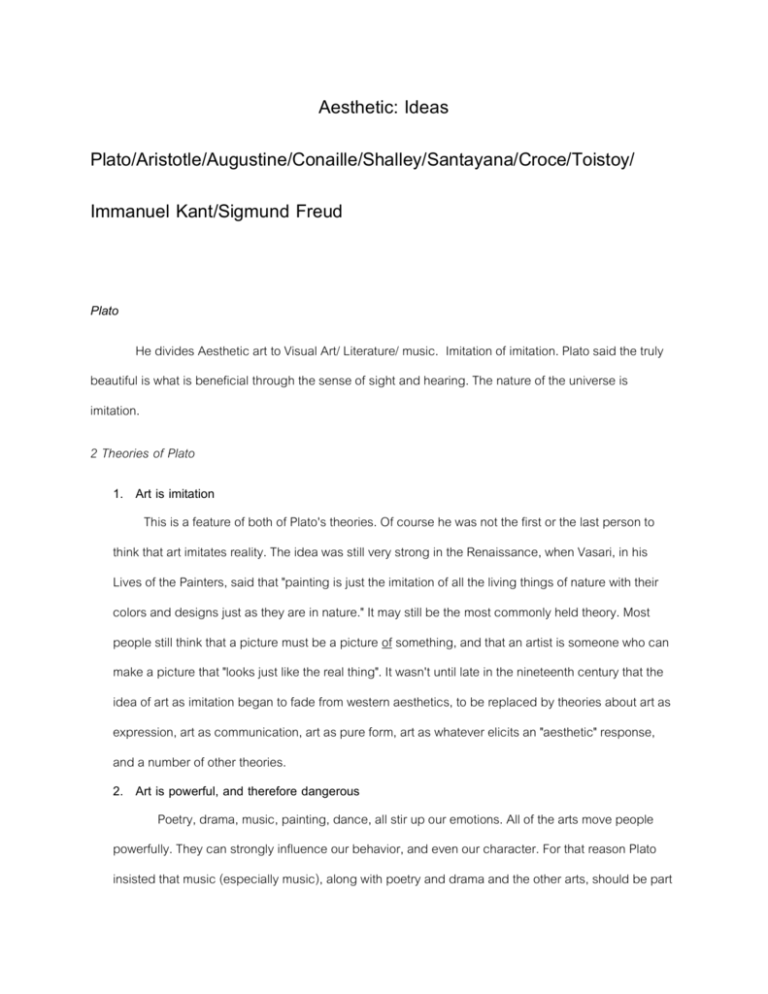
Aesthetic: Ideas Plato/Aristotle/Augustine/Conaille/Shalley/Santayana/Croce/Toistoy/ Immanuel Kant/Sigmund Freud Plato He divides Aesthetic art to Visual Art/ Literature/ music. Imitation of imitation. Plato said the truly beautiful is what is beneficial through the sense of sight and hearing. The nature of the universe is imitation. 2 Theories of Plato 1. Art is imitation This is a feature of both of Plato's theories. Of course he was not the first or the last person to think that art imitates reality. The idea was still very strong in the Renaissance, when Vasari, in his Lives of the Painters, said that "painting is just the imitation of all the living things of nature with their colors and designs just as they are in nature." It may still be the most commonly held theory. Most people still think that a picture must be a picture of something, and that an artist is someone who can make a picture that "looks just like the real thing". It wasn't until late in the nineteenth century that the idea of art as imitation began to fade from western aesthetics, to be replaced by theories about art as expression, art as communication, art as pure form, art as whatever elicits an "aesthetic" response, and a number of other theories. 2. Art is powerful, and therefore dangerous Poetry, drama, music, painting, dance, all stir up our emotions. All of the arts move people powerfully. They can strongly influence our behavior, and even our character. For that reason Plato insisted that music (especially music), along with poetry and drama and the other arts, should be part of the education of young citizens in his ideal republic, but should be strictly censored to present, at first, only the good. (That stories and images can shape character may seem obvious enough; but how does music do this? Plato was much impressed with the theories of Pythagoras, and his number mysticism. Early thinking about geometric ratios was partly inspired by noticing the series of overtones connected with the vibration of a string. A string, when plucked, vibrates along its whole length, but also in halves, giving the octave, and in other divisions which give the fifth, the third, and the rest of the overtone series. These are the bell-like higher tones string players produce when they play "harmonics". Plato thought that the right sort of music would help to set the soul in harmony rather than discord. But that meant excluding certain musical modes from the Republic, and keeping only those that were conducive to a properly ordered soul, i.e., one whose will ruled its passions at the direction of its reason. Only when young people were ready should the strength of their character be tested by exposing them to depictions of evil, and to the more promiscuous modes of music. Aristotle Art is an imitation object. Tragedy is an imitation of human action in which someone suffers disaster because of some defect. The popose of tragedy is to effect a pleasurable caltharsis of the emotions of pity and fear. Sigmund Freud “Art is an expression of unconscious” Immanuel Kant “ Aesthetic judgment is the Judgment of Taste “ Toistoy Art can be harmful or beneficial depending on the degree to which it contributes to a sense of fraternal love. Good art transmits simple feelings that draw people together. Croce Art is an expression of impressions (transformation of materials of experience into intuitions of the concrete). Augestine He denied the relativity and subjectivity of beauty. Perception of beauty depends upon a normative judgement of what comports to the ideal. Connaille Beauty is a moral force, using mimesis as a weapon. Shalley Art/Artist are important because art develops the imagination, incress the emotion power. Imagination is the most important element of the soul. Santayana Beauty is pleasure reguarded as the quality of a thing. It is a value. It is an emotion, an effection of our volitional and appreciative nature.
